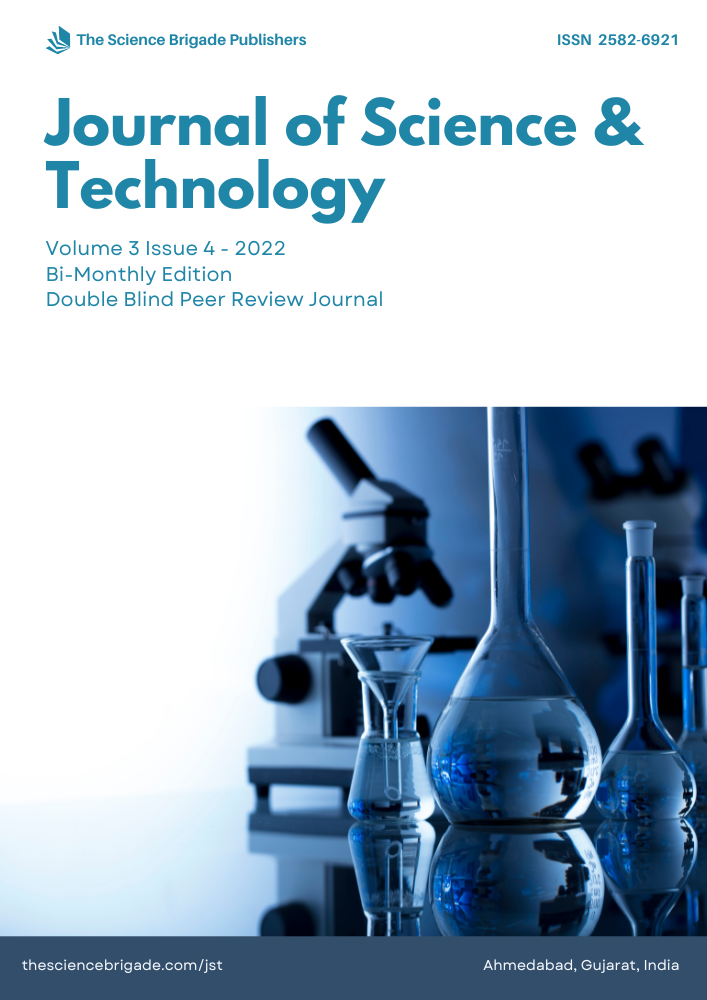Unveiling the Essence of Performance Testing: A Comprehensive Review
Downloads
Keywords:
Performance Testing, Software Quality, SignificanceAbstract
Performance testing is a pivotal component of the software development lifecycle, ensuring that applications meet the demands of users in terms of speed, responsiveness, scalability, and reliability. This review article delves into the multifaceted world of performance testing, exploring its significance, key metrics, testing strategies, and the evolving landscape of performance testing tools.
Downloads
References
Pargaonkar, S. (2020). A Review of Software Quality Models: A Comprehensive Analysis. Journal of Science & Technology, 1(1), 40–53. Retrieved from https://thesciencebrigade.com/jst/article/view/37.
Vokolos, F. I., & Weyuker, E. J. (1998, October). Performance testing of software systems. In Proceedings of the 1st International Workshop on Software and Performance (pp. 80-87).
Pargaonkar, S. “Achieving Optimal Efficiency: A Meta-Analytical Exploration of Lean Manufacturing Principles”. Journal of Science & Technology, vol. 1, no. 1, Oct. 2020, pp. 54-60, https://thesciencebrigade.com/jst/article/view/38
Nirpal, P. B., & Kale, K. V. (2011). A brief overview of software testing metrics. International Journal on Computer Science and Engineering, 3(1), 204-2011.
Pargaonkar, S. “Bridging the Gap: Methodological Insights from Cognitive Science for Enhanced Requirement Gathering”. Journal of Science & Technology, vol. 1, no. 1, Oct. 2020, pp. 61-66, https://thesciencebrigade.com/jst/article/view/39
Gan, X. (2006). Software Performance Testing.
Pargaonkar, S. “Future Directions and Concluding Remarks Navigating the Horizon of Software Quality Engineering”. Journal of Science & Technology, vol. 1, no. 1, Oct. 2020, pp. 67-81, https://thesciencebrigade.com/jst/article/view/40
Pargaonkar, S. “Quality and Metrics in Software Quality Engineering”. Journal of Science & Technology, vol. 2, no. 1, Mar. 2021, pp. 62-69, https://thesciencebrigade.com/jst/article/view/41
Pargaonkar, S. “The Crucial Role of Inspection in Software Quality Assurance”. Journal of Science & Technology, vol. 2, no. 1, Mar. 2021, pp. 70-77, https://thesciencebrigade.com/jst/article/view/42
Adamoli, A., Zaparanuks, D., Jovic, M., & Hauswirth, M. (2011). Automated GUI performance testing. Software Quality Journal, 19(4), 801-839.
Pargaonkar, S. “Unveiling the Future: Cybernetic Dynamics in Quality Assurance and Testing for Software Development”. Journal of Science & Technology, vol. 2, no. 1, Mar. 2021, pp. 78-84, https://thesciencebrigade.com/jst/article/view/43
Pargaonkar, S. “Unveiling the Challenges, A Comprehensive Review of Common Hurdles in Maintaining Software Quality”. Journal of Science & Technology, vol. 2, no. 1, Mar. 2021, pp. 85-94, https://thesciencebrigade.com/jst/article/view/44
Downloads
Published
How to Cite
Issue
Section
License
Copyright (c) 2022 Dr. Natalie Bennett

This work is licensed under a Creative Commons Attribution-NonCommercial-ShareAlike 4.0 International License.
License Terms
Ownership and Licensing:
Authors of this research paper submitted to the journal owned and operated by The Science Brigade Group retain the copyright of their work while granting the journal certain rights. Authors maintain ownership of the copyright and have granted the journal a right of first publication. Simultaneously, authors agreed to license their research papers under the Creative Commons Attribution-NonCommercial-ShareAlike 4.0 International (CC BY-NC-SA 4.0) License.
License Permissions:
Under the CC BY-NC-SA 4.0 License, others are permitted to share and adapt the work, as long as proper attribution is given to the authors and acknowledgement is made of the initial publication in the Journal. This license allows for the broad dissemination and utilization of research papers.
Additional Distribution Arrangements:
Authors are free to enter into separate contractual arrangements for the non-exclusive distribution of the journal's published version of the work. This may include posting the work to institutional repositories, publishing it in journals or books, or other forms of dissemination. In such cases, authors are requested to acknowledge the initial publication of the work in this Journal.
Online Posting:
Authors are encouraged to share their work online, including in institutional repositories, disciplinary repositories, or on their personal websites. This permission applies both prior to and during the submission process to the Journal. Online sharing enhances the visibility and accessibility of the research papers.
Responsibility and Liability:
Authors are responsible for ensuring that their research papers do not infringe upon the copyright, privacy, or other rights of any third party. The Science Brigade Publishers disclaim any liability or responsibility for any copyright infringement or violation of third-party rights in the research papers.
Plaudit
License Terms
Ownership and Licensing:
Authors of this research paper submitted to the Journal of Science & Technology retain the copyright of their work while granting the journal certain rights. Authors maintain ownership of the copyright and have granted the journal a right of first publication. Simultaneously, authors agreed to license their research papers under the Creative Commons Attribution-NonCommercial-ShareAlike 4.0 International (CC BY-NC-SA 4.0) License.
License Permissions:
Under the CC BY-NC-SA 4.0 License, others are permitted to share and adapt the work, as long as proper attribution is given to the authors and acknowledgement is made of the initial publication in the Journal of Science & Technology. This license allows for the broad dissemination and utilization of research papers.
Additional Distribution Arrangements:
Authors are free to enter into separate contractual arrangements for the non-exclusive distribution of the journal's published version of the work. This may include posting the work to institutional repositories, publishing it in journals or books, or other forms of dissemination. In such cases, authors are requested to acknowledge the initial publication of the work in the Journal of Science & Technology.
Online Posting:
Authors are encouraged to share their work online, including in institutional repositories, disciplinary repositories, or on their personal websites. This permission applies both prior to and during the submission process to the Journal of Science & Technology. Online sharing enhances the visibility and accessibility of the research papers.
Responsibility and Liability:
Authors are responsible for ensuring that their research papers do not infringe upon the copyright, privacy, or other rights of any third party. The Journal of Science & Technology and The Science Brigade Publishers disclaim any liability or responsibility for any copyright infringement or violation of third-party rights in the research papers.

